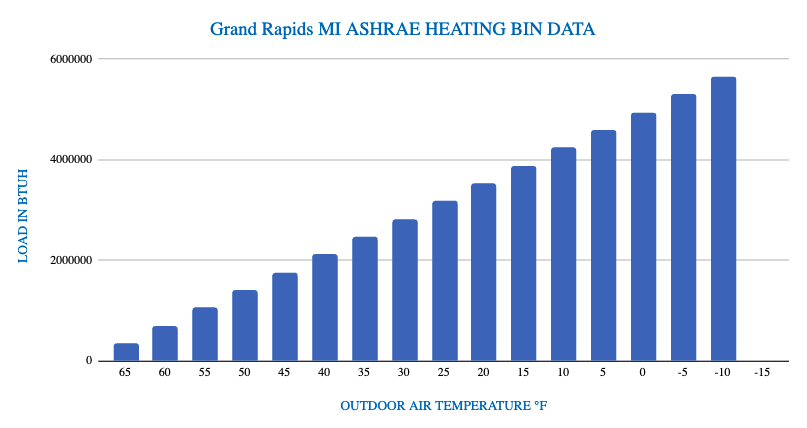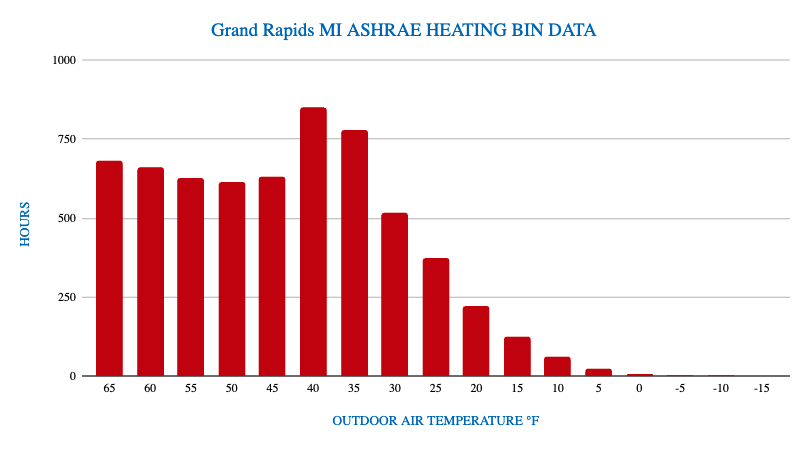 Turndown Ratios may have two different meanings to engineers designing a hydronic heating system for building or process systems. The normal turndown is defined as the ratio of maximum fuel input rate to the minimum fuel input rate of a variable input burner. Turndown may also mean the minimum flow rate to the boiler compared to the design flow rate. Both terms are explained in today’s R. L. Deppmann Monday Morning Minutes.
Turndown Ratios may have two different meanings to engineers designing a hydronic heating system for building or process systems. The normal turndown is defined as the ratio of maximum fuel input rate to the minimum fuel input rate of a variable input burner. Turndown may also mean the minimum flow rate to the boiler compared to the design flow rate. Both terms are explained in today’s R. L. Deppmann Monday Morning Minutes.
What is Boiler Turndown?
Boiler turndown is mentioned in the introduction. In general, it refers to the ability to adjust a boiler’s firing rate (input) to precisely meet the real-time heating demand (output) of the system without temperature overshoot. If the required system BTUH is less than the minimum firing rate of the boiler plant, a boiler will start cycling on and off to satisfy the load. A cycling boiler is a boiler that wastes energy and money. Last week we defined the difference between water tube and fire tube boilers. In general, the turndown ratio of a firetube boiler is greater than water tube designs.
Boiler Turndown and History
The higher the turndown ratio you have, the greater the efficiency of the condensing boiler plant. For many years, boilers operated as on-off devices. These boilers had a great deal of water content and fired for long periods of time because of the mass. These early systems were more concerned with keeping the building warm than the cost of energy. In addition, the controls were less sophisticated. As boilers became smaller and contained less water there was more cycling or turning on and off. With cycling came temperature overshoot and losses.
Like a car that either does 100 miles an hour (MPH) or 0 MPH. It was fine if you just kept running wide open. If the speed limit drops and the car can only go 100 MPH, you must ride the brake. That costs money to run the car and more expense to repair the brakes. It was the same with cycling boilers.
The next evolution was the Lo/Hi-Lo or 2 Stage Fired Boilers. Everyone rallied around this as being the better way to go because sometimes the “Speed Limit” was only 50 MPH and with an on-off boiler all you could do was go 100 MPH then brake for long periods. Now we had a choice of 100 MPH or 50 MPH. The next generation of boilers included three and four stage boilers. Today most condensing boilers are fully modulating. They operate to match the load from maximum fire down to minimum fire. This minimum fire amount varies from manufacturer to manufacturer.
Once at minimum fire the boiler will cycle on and off. When a boiler cycles off, there is a post-purge cycle. The fan blows the cold air to purge any leftover gas. While doing this, the flue pipe and some of the metal in the boiler cools. When the boiler cycles back on, the fan runs in a pre-purge cycle doing the same cooling. Now the boiler fires and must use energy to reheat all the metal up to temperature. The lower the minimum firing rate, the less cycling occurs, the less wear and tear on the boiler, and the higher the potential efficiency.
Turndown Ratio Example in a Hydronic Boiler Plant
The turndown of a hydronic boiler is the ability of the boiler to operate at a reduced load without or cycling on and off. As an example, a boiler is rated 6,000,000 BTUH and can operate at a minimum load of 1,200,000 BTUH. We would say the boiler has a 5:1 turndown ratio since 6,000,000/1,200,000 = 5. If the same boiler can operate at 400,000 BTUH on the low end, without cycling, it would have a 15:1 turndown ratio.
A quick note for those that have already noticed. I am using the 6 million BTUH boiler but not assuming an efficiency value. We all know that the 6 million BTUH boiler cannot output 6,000,000 BTUH. The efficiency is not 100%. I am just using the boiler rating numbers to keep the math simple in this exercise.
So, we defined the turndown ratio of a single boiler. How does this relate to the turndown ratio of the entire boiler plant? Assume you have a large high school with a 6,000,000 BTUH load. You choose (2) 6,000,000 BTUH high-efficiency condensing boilers in parallel, because the district requires N+1 or an extra boiler in case one, goes down. If they each have a 5:1 turndown ratio, the lowest operating load of a single boiler would be 1,200,000 BTUH. The plant has a total of turndown of 5:1 since only one boiler is needed for the load. This system will start cycling the boiler on and off anytime the load is below 1,200,000 BTUH. Before we look at other options for this plant, what low load might we need?
Boiler Plant Turndown vs. Load
Since hydronic heating loads normally vary a lot from fall to winter to spring, the required load also varies a lot. Look at the first chart below. We selected Grand Rapids because it is not the coldest area or the warmest area in our territory. It is a nice middle ground example. The boiler plant for this school will require the boiler to cycle when the load is below 1,200,000 BTUH. This will occur when the outdoor temperature is normally 53 degrees or lower. The second chart shows this load will occur about 30% of the operating hours of the boiler plant. This boiler plant will cycle inefficiently 30% of the time.
Boiler Plant Turndown Options
Improving the efficiency of our example system may take two different directions. We could use more, smaller boilers with the 5:1 turndown. We could also keep the same boiler quantity but increase the turndown.
The system could use (3) boilers of 3,000,000 BTUH with the 5:1 turndown. I say 3 because the district still requires the N+1 redundancy. Now a single boiler can operate down to 600,000 BTUH. The boiler plant will have a 10:1 turndown and cycling will be eliminated for all practical purposes. This plant is much more efficient.
The second option would be to use the same (2) 6,000,000 BTUH boilers but select them with 15:1 turndown. This option leaves us with two boilers and a plant where cycling would be eliminated.
Water Tube and Fire Tube Boilers
Most water tube style boilers are capable of a 5:1 turndown. Firetube boilers will turn down to 5:1, 8:1, 10:1, 15:1, and some will go all the way to 20:1. The example here uses a 15:1 firetube boiler. What is the difference in the boilers that cause the difference? Does the choice affect cost, space, and hydronic design? Look at last week for the differences in these two designs.
One Caution about Flow Rate Turndown
Once again, we look at the example high school shown above. Assume the 6,000,000 BTUH load was based on 40°F temperature difference and the fluid was water. 6,000,000/ (40 X 500) = 300 GPM. The design flow rate could be 300 GPM for the system pumps.
What if I apply the same math at the lowest boiler turndown of 400,000 BTUH in my 15:1 boiler? 400,000/ (40 X 500) = 20 GPM. The problem is that the minimum flow required by the boiler manufacturer is 50 GPM. We CANNOT design the system for a minimum flow of 20 GPM. We must use the required minimum flow of 50 GPM.
So, our temperature difference will change. 400,000/ (50 X 500) = 16 degrees. The differential will drop at the lowest loads. We can still design for a boiler turndown of 15:1 or 400,000 BTUH. We will still enjoy all the energy savings by not cycling the boilers.
We must make sure to remember that the minimum flow rate is based on equipment limits and not on math.
Next week we will introduce a fire tube product and use the turndown and minimum flow as an example.
Part One: Water Tube vs. Fire Tube Condensing Boilers (Part One)




